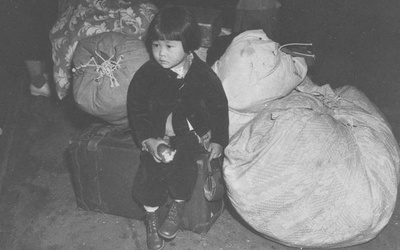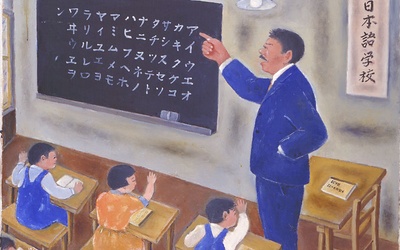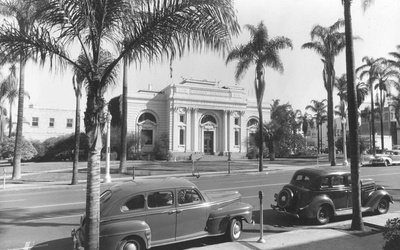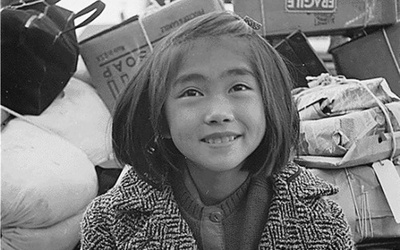Grandmother's Letter: Children and Books in Japanese American Internment Camps

Ms. Sachiko Aoki of the Children's Library Association in Tokyo told me about a letter written by a Japanese American that was published in a Japanese newspaper 10 or 20 years ago. The person spent time in an internment camp for Japanese Americans in the United States during World War II, and wrote that she "cannot forget the librarian who brought books to the camp." Encouraged by this letter, I began researching the lives of children in the internment camps and their relationship with books there.
*Reprinted from issues 133 to 137 of the quarterly magazine "Children and Books" (April 2013 to April 2014) published by the Children's Library Association.
Stories from this series
Chapter 1: Until Eviction (4)
Feb. 23, 2015 • Yuri Brockett
Read Chapter 1 (3) >> 4. Eviction Order <Spring 1942> Finally, the evacuation of Japanese Americans from military areas designated on the West Coast began. Some families voluntarily moved from the military areas, but this was a massive migration of more than 110,000 people. The construction of permanent inland relocation camps was not completed in time, so people set off to temporary "assembly centers." The evacuation began from the areas most inconvenient to the military. Bainbridge Island, with its nearby …
Chapter 1: Until Eviction (3)
Feb. 16, 2015 • Yuri Brockett
Read Chapter 1 (2) >> 3. The attack on Pearl Harbor and its repercussions <December 7, 1941 – Spring 1942> On Sunday, December 7, 1941 (Showa 16), many Japanese people living on the West Coast learned of the attack on Pearl Harbor through emergency radio news that was repeated incessantly: "The Japanese military has attacked Pearl Harbor. ... The damage to the American fleet is enormous. Fires are spreading all over the coast..." 1 The following is an excerpt from …
Chapter 1: Until Eviction (2)
Feb. 9, 2015 • Yuri Brockett
Read Chapter 1 (1) >> 2. Premonitions <1939 – Until the attack on Pearl Harbor> Henry Miyatake is a lively middle school boy who lives in Seattle's Japantown. His family consists of five people: his parents, his older sister, and his older brother. When his father first came to the United States, he grew lettuce in Huntington Beach, California, together with other Japanese immigrants. However, the lettuce would often get black, sloppy bits on it, and Henry's father thought it …
Chapter 1: Until Eviction (1)
Feb. 3, 2015 • Yuri Brockett
Read the prologue >> After the attack on Pearl Harbor in 1941, more than 110,000 Japanese people living on the West Coast of the United States were sent to internment camps. Two-thirds of them were born in the United States and were citizens, but they were simply of Japanese descent. Why did such an injustice happen, despite the United States Constitution, which proclaims individual freedom and equality? 1. Historical Background Immigration from Japan to America began with immigration to Hawaii …
prologue
Feb. 2, 2015 • Yuri Brockett
I had been receiving a subscription to "Children and Books" for many years, and I was running low on the subscription fee, so I sent it to them. I had just received "Man's Search for Meaning" (by Viktor E. Frankl, translated by Kayoko Ikeda) from the University of Oregon library, which I had requested from my local public library. I wrote to the librarian saying how grateful I was that they had searched through libraries all over the United States …







